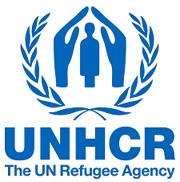For over 65 years, the United Nations High Commissioner for Refugees (UNHCR) has been protecting the rights and well-being of refugees all over the world.
We work to ensure that everybody has the right to seek asylum and find safe refuge, having fled violence, persecution, war or disaster at home.
Since 1950, we have faced multiple crises on multiple continents, and provided vital assistance to refugees, asylum-seekers, internally displacedand stateless people, many of whom have nobody left to turn to.
We help to save lives and build better futures for millions forced from home.
Members:
Resources
Displaying 16 - 19 of 19Handbook on Voluntary Repatriation: International Protection
Chapter 1 - UNHCR's Mandate for Voluntary Repatriation:
1.1 The Statute;
1.2 The 1951 Convention on the Status of Refugees;
1.3 General Assembly Resolutions;
1.4 UNHCR Executive Committee Conclusions;
1.5 Requests by the Secretary-General;
1.6 Summary of the Current UNHCR Mandate for Voluntary
Repatriation...
Chapter 2 - The Protection Content of Voluntary Repatriation:
2.1 International Human Rights Instruments and the Right to Return;
2.2 Cessation of Status and Fundamental Changes in the Country of
Origin;
State of the World's Refugees 1993: The Challenge of Protection
By 1993, 18.2 million men, women, and children across the world had left their homelands to escape persecution and violence. An average of 10,000 refugees a day were forced to flee the year before, as new upheavals forced out new victims. At least another 24 million were displaced within their own countries. Yet despite these staggering numbers and the backlash they have provoked in overburdened countries of asylum, the UN High Commissioner for Refugees believes there is a solution to the international refugee crisis.
Growing of medicinal plants for the production of biopesticides
General
Increasing attention is nowadays given to biological aspects in plant production, and in particular with regard to plant protection. Biological processes are an increasingly used method of controlling harmful organisms. Organic crop production, but also conventional phytoproduct cultivation, is one of the alternative ways of land management, minimizing environmental damage to the environment. It is a modern and dynamically developing way of growing plants, trying to get as close as possible to nature. Efforts to complement the plant protection product portfolio with biological products are also in line with the current strategy not only within the EU but also worldwide efforts to eliminate pesticide use. At present, pesticides cannot be completely replaced by biological agents. The limiting factor is the low biological activity of the formulations and their limited number. Therefore, efforts to acquire and synthesize new natural products and biological active substances based on bioagens or bioanalogues of natural compounds are increasingly supported in research and national programs. Secondary goals: • promoting primary agricultural production and processing of agricultural products and ensuring sustainable rural development • increasing the employment of the region • Reducing health and environmental risks • to find potential producers of medicinal plants for the production of biopesticides
Grant: STFZ-1166:Sharing Knowledge on the use of Biochar for Sustainable Land Management (Bilateral)
General
A $219,961 Bilateral grant from Starfish Initiatives to ICRAF for STFZ-1166:Sharing Knowledge on the use of Biochar for Sustainable Land Management



